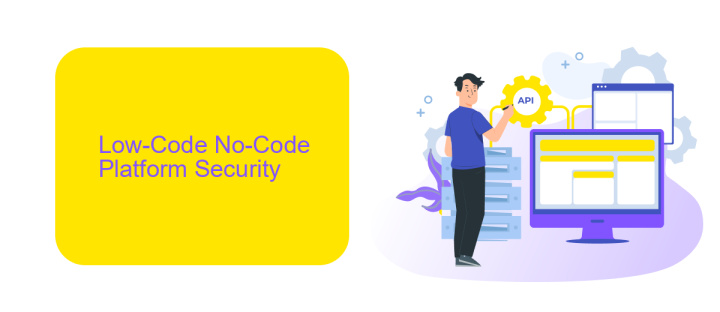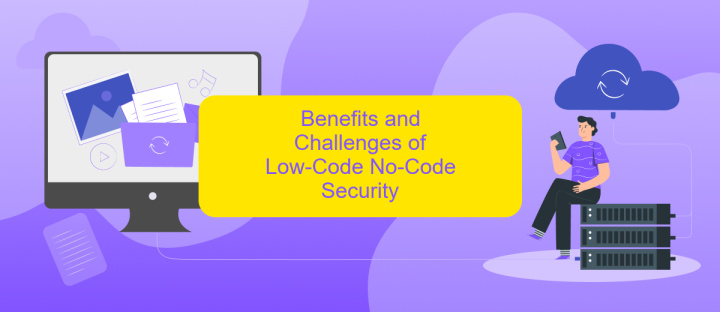Low-Code No-Code Security
In the rapidly evolving landscape of software development, Low-Code and No-Code platforms are revolutionizing how applications are built and deployed. While these tools democratize development and accelerate innovation, they also introduce unique security challenges. This article delves into the security implications of Low-Code and No-Code solutions, offering insights into best practices for safeguarding your applications.
Introduction
In recent years, Low-Code and No-Code platforms have revolutionized the way businesses develop applications, enabling rapid deployment with minimal coding expertise. However, as these platforms become increasingly popular, security concerns have also grown. Ensuring the security of applications built on Low-Code and No-Code platforms is paramount to protect sensitive data and maintain compliance with regulatory standards.
- Ease of use vs. security: Striking the right balance
- Common security challenges in Low-Code/No-Code development
- Best practices for securing Low-Code/No-Code applications
To address these challenges, integrating robust security measures and leveraging specialized services like ApiX-Drive can be highly beneficial. ApiX-Drive facilitates seamless integration of various applications, ensuring that data transfer is secure and compliant with industry standards. By prioritizing security in Low-Code and No-Code development, organizations can harness the benefits of these platforms without compromising on data protection and regulatory compliance.
Low-Code No-Code Platform Security

Ensuring the security of low-code and no-code platforms is paramount, as these tools are often used by non-technical users to develop applications. One of the key aspects of platform security is access control. It is crucial to implement robust authentication and authorization mechanisms to ensure that only authorized users can access and modify application data. Additionally, data encryption, both in transit and at rest, should be employed to protect sensitive information from unauthorized access and breaches.
Another important aspect is the integration of third-party services and APIs, which can introduce vulnerabilities if not managed properly. Using services like ApiX-Drive can help streamline and secure these integrations by providing a reliable and secure way to connect various applications and services. Regular security audits and updates are also essential to identify and mitigate potential threats. By adhering to these best practices, organizations can leverage low-code and no-code platforms while maintaining a high level of security.
Benefits and Challenges of Low-Code No-Code Security

Low-code and no-code platforms offer significant advantages in terms of accelerating development and reducing costs. However, when it comes to security, there are both benefits and challenges that organizations must consider.
- Benefits:
- Speed and Efficiency: Rapid development cycles allow for quicker deployment of security patches and updates.
- Reduced Human Error: Pre-built templates and modules minimize coding errors that can lead to security vulnerabilities.
- Accessibility: These platforms enable non-technical users to implement security features without deep coding knowledge.
- Challenges:
- Limited Customization: Pre-built modules may not offer the flexibility needed for complex security requirements.
- Third-Party Dependencies: Reliance on external platforms like ApiX-Drive for integrations can introduce new security risks.
- Scalability Issues: As applications grow, maintaining robust security can become more challenging.
While low-code and no-code platforms provide a streamlined approach to application development, they also require careful consideration of security practices. Integrating services like ApiX-Drive can help with seamless integrations, but organizations must remain vigilant about potential vulnerabilities and continuously monitor their security posture.
Best Practices for Low-Code No-Code Security

Implementing robust security measures in low-code and no-code platforms is crucial to protect sensitive data and ensure compliance. Begin by thoroughly understanding the security features provided by the platform you are using. Ensure that it supports strong authentication mechanisms, such as multi-factor authentication, to safeguard user access.
Regularly update and patch your low-code and no-code applications to mitigate vulnerabilities. It's also essential to conduct regular security audits and assessments to identify potential risks and address them promptly. Leveraging integration platforms like ApiX-Drive can streamline these processes by automating data transfers and ensuring secure communication between different systems.
- Enable role-based access controls to limit user permissions.
- Encrypt data both at rest and in transit to prevent unauthorized access.
- Implement logging and monitoring to detect and respond to suspicious activities.
- Regularly review and update your security policies and procedures.
By following these best practices, you can significantly enhance the security of your low-code and no-code applications. Remember, security is an ongoing process that requires continuous monitoring and improvement to stay ahead of potential threats.
- Automate the work of an online store or landing
- Empower through integration
- Don't spend money on programmers and integrators
- Save time by automating routine tasks
Conclusion
In conclusion, the adoption of low-code and no-code platforms offers significant advantages for businesses looking to accelerate their digital transformation. These tools empower non-technical users to create and deploy applications quickly, reducing the dependency on IT departments and enabling faster response times to market demands. However, it is crucial to address the security challenges that come with these platforms to ensure that the benefits do not come at the cost of increased vulnerabilities.
Implementing robust security measures, such as regular code reviews, access controls, and continuous monitoring, can mitigate potential risks. Additionally, leveraging integration services like ApiX-Drive can streamline the process of connecting various applications while maintaining a high level of security. By prioritizing security in the development and deployment of low-code and no-code solutions, organizations can fully harness their potential while safeguarding their data and systems.
FAQ
What is Low-Code/No-Code development?
How secure are Low-Code/No-Code platforms?
Can Low-Code/No-Code platforms be used for enterprise-level applications?
How can I ensure the security of integrations created with Low-Code/No-Code platforms?
What are the common security risks associated with Low-Code/No-Code development?
Routine tasks take a lot of time from employees? Do they burn out, do not have enough working day for the main duties and important things? Do you understand that the only way out of this situation in modern realities is automation? Try Apix-Drive for free and make sure that the online connector in 5 minutes of setting up integration will remove a significant part of the routine from your life and free up time for you and your employees.


